All issues

Volume 15 (1978)
- Issue 4 Pages 223-
- Issue 3 Pages 139-
- Issue 2 Pages 65-
- Issue 1 Pages 1-
Volume 15, Issue 2
Displaying 1-4 of 4 articles from this issue
- |<
- <
- 1
- >
- >|
-
Noriko KAMAKURA, Michiko OHMURA, Harumi ISHII, Fumiko MITSUBOSHI, Yori ...1978 Volume 15 Issue 2 Pages 65-82
Published: June 18, 1978
Released on J-STAGE: October 28, 2009
JOURNAL FREE ACCESSFor the purpose of classifying static prehensile patterns, the positions of the fingers and the contacting areas which seven subjects demonstrated while grasping 98 objects were photographed, analysed and compared.
Fourteen types were identified as following: 1) Power grip-Standard type, 2) Power grip-Hook type, 3) Power grip-Index finger extension type, 4) Power grip-Distal type, 5) Power grip-Extension type, 6) Lateral grip, 7) Tripod grip-type I, 8) Tripod grip-type II, 9) Tripod grip-type III, 10) Parallel mild-flexion grip, 11) Tip grip (Tip prehension), 12) Surrounding mild-flexion grip, 13) Parallel extension grip, 14) Adduction grip.
Eighty-six percent of the observed prehension could be fitted into one of these types and the rest into intermediate or combined ones.
In all seven subjects, thirty-one of ninety-eight objects were grasped with identical patterns and the rest with two or more specific ones.View full abstractDownload PDF (8523K) -
from the Viewpoint of Hip Angle and Disability of Spine and Neighboring JointsKosaku MAENO1978 Volume 15 Issue 2 Pages 83-94
Published: June 18, 1978
Released on J-STAGE: October 28, 2009
JOURNAL FREE ACCESSIn this paper, A. D. L. was evaluated and motion pattern were analysed for 40 patients with surgical hip fusion progressed over one year after operations, comparing with fused hip angle, R. O. M. of spine and neighboring joints, and pain. And for 6 patients of them, gait analysis was made, taking 16mm movies in 2 synchronized directions of frontal plane and sagittal plane.
‹conclusion›
1) Highly significant correlation exists between (1) fused hip angle and degree of disability of spine and neighboring joints, and (2) each A. D. L. and motion pattern.
2) A. D. L. in flexion direction (e. g. upright sitting and sitting in a chair) is correlated with the sum of fused hip angle and flexion range of spine after operation, and the desirable angle of the sum is more than 90°.
3) Extension range of spine after operation is necessary more than 15° or 20° from a result of gait analysis.
4) Total range of motion of spine is necessary more than 60° from A. D. L. and gait.
5) In bilateral oste-arthritis, desirable range of motion of contralateral hip joint is more than 80° in flexion, 15° in abduction, and 60° in total range of flexion and extension.View full abstractDownload PDF (1636K) -
Toshiko S. WATAMORI, Sumiko SASANUMA1978 Volume 15 Issue 2 Pages 95-105
Published: June 18, 1978
Released on J-STAGE: October 28, 2009
JOURNAL FREE ACCESSTwenty aphasic patients were asked to give descriptions of their communication difficulties in daily communication situations. Their responses were analyzed and the implications for communication management at 1) the immediate post-onset stage, and 2) the post-plateau stage were discussed.
Problems encountered by the patients in the immediate post-onset period included psychological instability such as anxiety, solitude, disorganized thought processes, difficulty in concentration and in learning new materials, decreased memory span, and lack of motivation in addition to communication problems per se.
On the basis of these findings, it was suggested that although it is necessary to take preventive measures, formal aphasia examination and therapy should be deferred until the patient's physical-psychological stability is obtained. The speech therapist's role at the immediate post-onset stage includes gathering information through frequent, informal observation of the patient, providing psychological support for the patient and his family, finding out the most effective communication method with the patient and helping the family and the ward staff to use this method.
Communication difficulties experienced by the patients in the post-plateau stage included the following:
a) Residual organic signs of aphasia: Short auditory memory span, figure-ground disorder, persisting difficulty in articulation and prosody, etc. tended to remain in many patients even after intensive language therapy.
b) Undesirable attitude toward communication: Many patients exhibited anxiety and avoidance reactions in communication situations, which seemed to stem from the organic signs enumerated in a).
Taken together, these findings were interpreted as indicating the necessity for a systematic program aimed at enhancing communication abilities in post-plateau patients. This type of program seems to be of special importance for patients with a good possibility of returning to former employment.
It was further suggested that a modified framework for stuttering therapy (which makes use of identification, desensitization and modification procedures) would be profitably applied to the aphasic patients at this stage of rehabilitation.View full abstractDownload PDF (1745K) -
[in Japanese]1978 Volume 15 Issue 2 Pages 107-128
Published: June 18, 1978
Released on J-STAGE: October 28, 2009
JOURNAL FREE ACCESSDownload PDF (2914K)
- |<
- <
- 1
- >
- >|